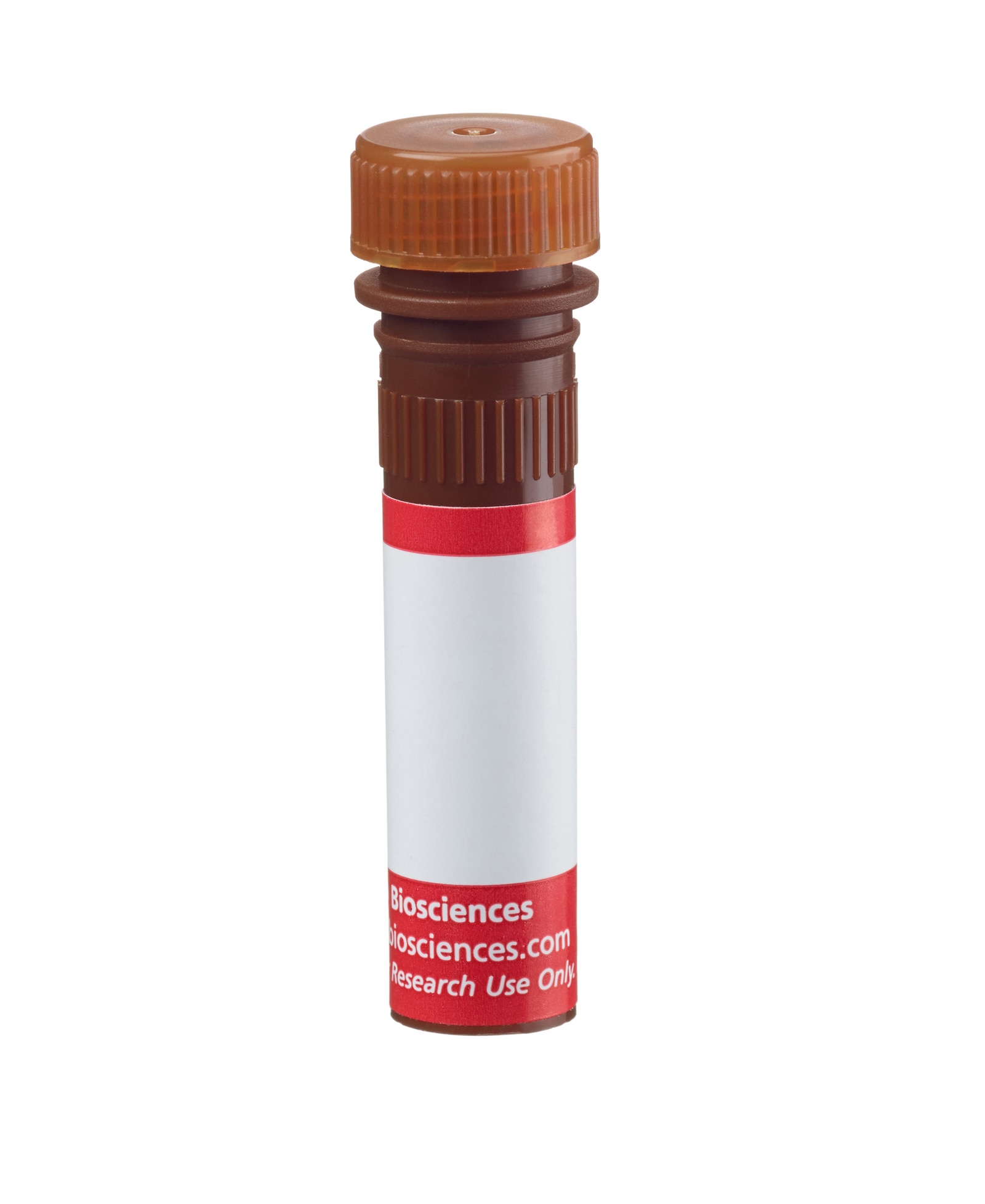-
Your selected country is
Middle East / Africa
- Change country/language
Old Browser
This page has been recently translated and is available in French now.
Looks like you're visiting us from {countryName}.
Would you like to stay on the current country site or be switched to your country?
BD Pharmingen™ Streptavidin APC-Cy™7
(RUO)





APC-Cy7 spectra. The absorption spectrum of SAv-APC-Cy7 is presented with the corresponding emission spectrum, at the excitation wavelength of 635 nm.

Sample staining on mouse thymocytes (left panel) and splenocytes (right panel). BALB/c mouse thymocytes were stained with APC Rat Anti-Mouse CD4 (Cat. No. 553051) and Biotin Rat Anti-Mouse CD8a (Cat. No. 553028/553029). BALB/c mouse splenocytes were stained with APC Hamster Anti-Mouse CD3e (Cat. No. 553066) and Biotin Rat Anti-Mouse CD45R/B220 (Cat. No. 553085/553086). The biotin conjugates were visualized with Streptavidin APC-Cy™7 (Cat. No.554063). Experiments were performed on a dual-laser FACSVantage™ flow cytometry system equipped with a HeNe laser. APC-Cy7 fluorescence was collected in the FL4 PMT channel, and APC fluorescence was collected in the FL5 PMT channel.


BD Pharmingen™ Streptavidin APC-Cy™7

BD Pharmingen™ Streptavidin APC-Cy™7

Regulatory Status Legend
Any use of products other than the permitted use without the express written authorization of Becton, Dickinson and Company is strictly prohibited.
Preparation And Storage
Product Notices
- Since applications vary, each investigator should titrate the reagent to obtain optimal results.
- Caution: Sodium azide yields highly toxic hydrazoic acid under acidic conditions. Dilute azide compounds in running water before discarding to avoid accumulation of potentially explosive deposits in plumbing.
- For fluorochrome spectra and suitable instrument settings, please refer to our Multicolor Flow Cytometry web page at www.bdbiosciences.com/colors.
- APC-Cy7 is a tandem fluorochrome composed of Allophycocyanin (APC), which is excited by laser lines between 595 and 647 nm and serves as an energy donor, coupled to the cyanine dye Cy7™, which acts as an energy acceptor and fluoresces at 780 nm. BD Biosciences Pharmingen has maximized the fluorochrome energy transfer in APC-Cy7, thus maximizing its fluorescence emission intensity, minimizing residual emission from APC, and minimizing required electronic compensation in multilaser-laser flow cytometry systems. Note: Although every effort is made to minimize the lot-to-lot variation in residual emission from APC, it is strongly recommended that every lot be tested for differences in the amount of compensation required and that individual compensation controls are run for each APC-Cy7 conjugate.
- APC-Cy7 tandem fluorochrome emission is collected in a detector for fluorescence wavelengths of 750 nm and higher.
- Please observe the following precautions: Absorption of visible light can significantly alter the energy transfer occurring in any tandem fluorochrome conjugate; therefore, we recommend that special precautions be taken (such as wrapping vials, tubes, or racks in aluminum foil) to prevent exposure of conjugated reagents, including cells stained with those reagents, to room illumination.
- Warning: Some APC-Cy7 and PE-Cy7 conjugates show changes in their emission spectrum with prolonged exposure to formaldehyde. If you are unable to analyze fixed samples within four hours, we recommend that you use BD™ Stabilizing Fixative (Cat. No. 338036).
- Cy is a trademark of GE Healthcare.
- Please refer to http://regdocs.bd.com to access safety data sheets (SDS).
- Please refer to www.bdbiosciences.com/us/s/resources for technical protocols.
Sav-APC-Cy7 is a useful second-step reagent for the indirect immunofluorescent staining of cells in combination with biotinylated primary antibodies for flow cytometric analysis. SAv-APC-Cy7/biotin conjugates can be used with APC-conjugated reagents to provide two independent staining parameters from a HeNe laser. When choosing reagents for a multicolor staining protocol, we recommend that the APC-Cy7 fluorochrome be reserved for detection of high-density antigens to assure adequate discrimination of antigen expression.

Development References (2)
-
Beavis AJ, Pennline KJ. Allo-7: a new fluorescent tandem dye for use in flow cytometry. Cytometry. 1996; 24(4):390-395. (Biology). View Reference
-
Roederer M, Kantor AB, Parks DR, Herzenberg LA. Cy7PE and Cy7APC: bright new probes for immunofluorescence. Cytometry. 1996; 24(3):191-197. (Biology). View Reference
Please refer to Support Documents for Quality Certificates
Global - Refer to manufacturer's instructions for use and related User Manuals and Technical data sheets before using this products as described
Comparisons, where applicable, are made against older BD Technology, manual methods or are general performance claims. Comparisons are not made against non-BD technologies, unless otherwise noted.
For Research Use Only. Not for use in diagnostic or therapeutic procedures.
Report a Site Issue
This form is intended to help us improve our website experience. For other support, please visit our Contact Us page.